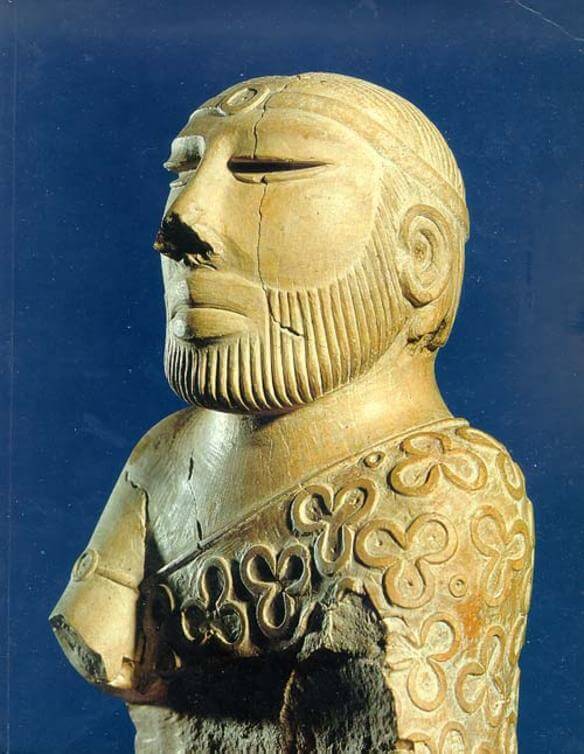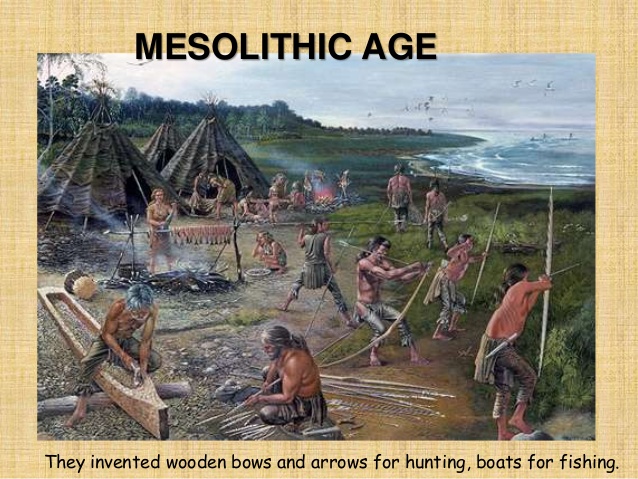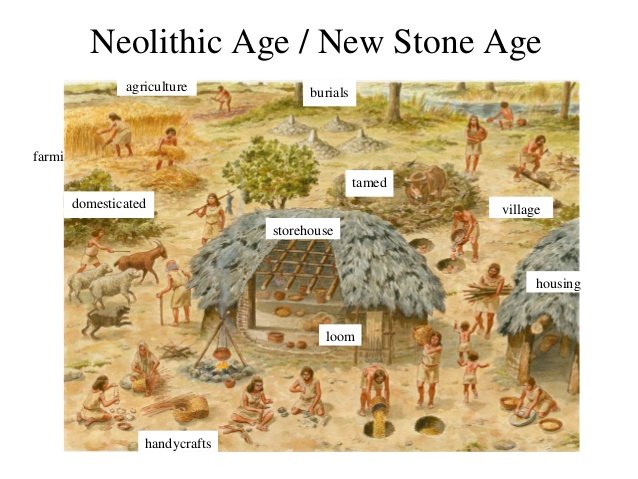- Home
- History of India
- Indus Valley Civilisation
Indus Valley Civilisation
Indus Valley Civilisation
Indus valley civilisation is one of the oldest civilisation which extended from Northeast Afghanistan to Pakistan and northwest India. The civilisations flourished most on Indus River and the Ghaggar Hakra River which travelled through northwest India and eastern Pakistan.
One of the oldest and important civilisation that was expected to have taken place around 2500-1500BC is Indus Valley Civilisation. With some similarities between Indus and Mesopotamia civilisation it can be said that it existed about 2,500 years before Christ. This Civilisation flourished along the banks of river Indus and its tributaries which are located in present day Pakistan north western parts of India, Turmekisthan and Afghanistan.
Unlike other different civilisation that took place either in Europe or China, Indus Valley Civilisation is one of the biggest and unique civilisation.. What makes this civilisation unique as compared to other civilisation is that people of this civilisation neither built any monument nor mummies. There were no violent battles or wars during this period. People lived with love and principles in this civilisation. That is the reason this civilisation is so successful and popular even today.
Indus Valley Civilisation started in the Bronze Age in the cities of Harappa and Mohenjo-Daro both now in Pakistan. Other places where this civilisation flourished are Lothal, Dolavira currently in Haryana and Gujarat. Harappa was one of the first site to be excavated which was in the Punjab province during British Period and now in Pakistan. The Harappan civilisation came to light only when the archaeologists discovered the reminants in Harappan city around 1920. Another important civilisation was Vedic Civilisation.
Excavation
Charles Masson of East India Company’s army gave the first description of the ruins of Harappa in the book called as Narrative of various journeys in Baluchistan, Afghanistan and the Punjab. The British India accidentally used the bricks from the ruins of the Harappa sites to build the Indian railway line between Karachi and Lahore.
Archaeological Survey of India was established in the year 1861 after the Crown rule came to India. Alexander Cunningham was appointed as the first director general of the Archaeological survey of India.
After his appointment he again visited the Harappan city and published his findings in which he has mentioned about the Harappan stamp seal with unknown script. Further John Marshall was appointed as the head of the Archaeological survey of India. After several excavations at the Harappa, Mohenjo-Daro was excavated. Marshall appointed many officers to further do survey of both the sites. These officers included D.R. Bhandarkar, R.D Banerji and M.S. Vats.
Due to the partition of India and Pakistan in the year 1947 most of the excavated sites went to Pakistan hence further excavation on the lines of Ghaggar and Hakra system was carried out in India. According to the historians it is believed that India has more than 600 sites and Pakistan has around 400 sites. Excavations are still going on and new sites are coming up.
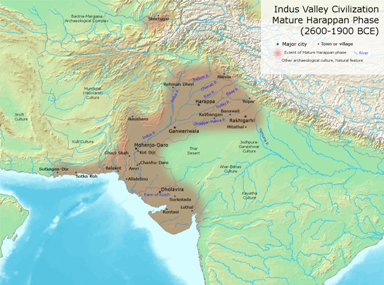
Chronology of Indus Valley Civilisation
Early Harappan Phase (3300 BC-2800BC)
Mature Harappan Phase ( 2600 BC-1900 BC)
Late Harappan era ( 1900BC-1300BC)
Post Harappan Era
The early , Mature and Late Harappan era are also known as Regionalisation, Integration and Localisation eras. The early Harappan phase lasted from 3300-2800 BC near the River Ravi. Hence this phase is also known as Ravi Phase. The examples of the usage of Indus script dates back to 3000 BC. The ancient site known as Kot Dilji which was the forerunner of Indus valley civilisation represents the phase leading to Mature Harappan Phase. By 2600 BC the early Harappan communities turned into large urban centres from where the mature urban centre started.
Mature Harappan phase: By 2600 BC
the early phase of Indus valley civilisation moved into mature phase. The
cities were more sophisticated which included cities like Harappa, Mohenjo
daro, Dolavira, Rupar, Lothal in modern
India.
Writing Scripts and Seals
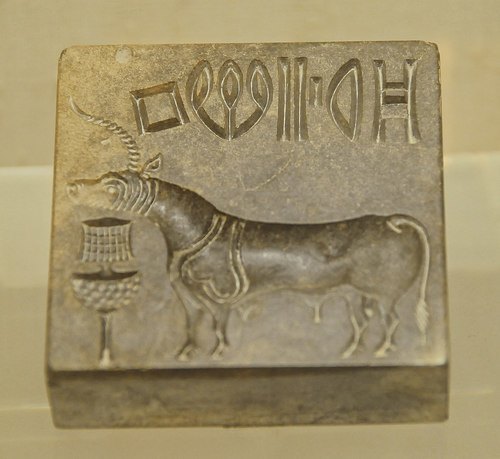
As many as 400 different Indus symbols have been found on ceramic pots, seals and other materials that have been excavated in the Indus valley sites. The Indus inscriptions include not more than five characters other than the Dolovira sign board.
From the evidence of these inscriptions the Indus valley has been described as a literate society. However, Farmer, Wiztel argue that the Indus valley did not encode any language. The messages on the seals are very small to decode and each seals have different combinations of symbols. The symbols which have images also vary from seal to seal.
Seals that are found in Mohenjo daro have female figurines depicting Goddess Pashupati, dancing girl. A human deity with Horns, hooves and tail of bull and a fighting scene with a horn tiger beast also appear on seal.
Indus Valley Civilization - Lifestyle
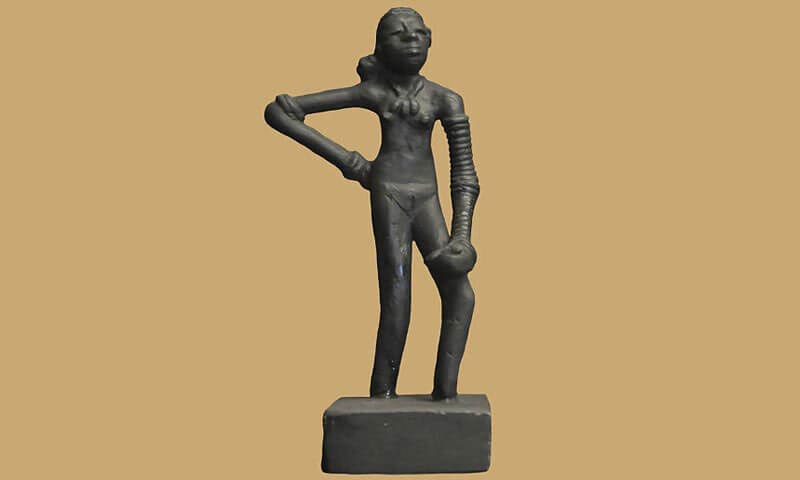
Lifestyle of Indus Valley people
Even today we do not have precise information about the lifestyle of the people during this period. But as and when new sites are identified by archaeologists through excavations, we are collecting more and more information about their food habits, lifestyle and social life of people. One thing that can be said is people of Indus Valley Civilisation seems to be very intelligent as the houses in this period were constructed based on proper architecture. They had proper drainage system; houses were constructed neatly with brunt bricks. The discovery of Naushera in Pakistan has further yielded to the process of transformation from early to mature Harappan phase. After excavation and careful study, it is said that the town of Mohenjo-Daro or the Mound of bead was perhaps built and rebuilt many times.
Mohenjo-Daro likely was, at its time, the greatest city in the world. At that time as many as 35,000 people lived and worked in this massive city, which occupied 250 acres along Indus River. Mohenjo-Daro sat beneath the soil for thousands of years, a preserved relic of the ancient Indus Valley civilization
The houses were neatly constructed with burnt bricks and had flat roofs. The houses were either single or double storied with courtyard and wells. The wells had steps and many rooms, these rooms were probably for changing and also were used as cooling rooms during summer. On the west side of the main road citadel (a high raised building) were done. On the east side of the main road proper residential area surrounded by massive brick wall was constructed.
Drainage System in Indus Valley Civilisation
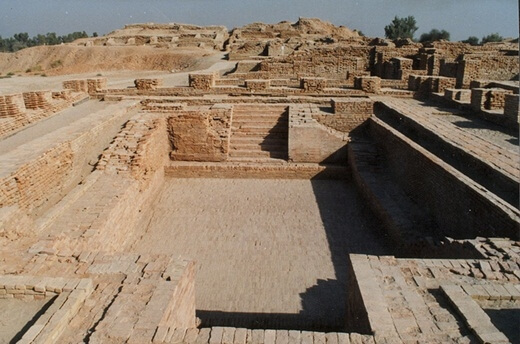
Water and drainage systems
Drainage system was well connected in Indus Valley Civilisation. All the drains from the house were connected to one big drain on the road. The roads were around 10feet wide. Every house had an independent pit which collected all sediment and allowed water to flow to the main drains passing underneath the main street of the town.
A great bath, which is being evacuated in Mohenjo-Daro, shows how good were the water systems...The great bath is surrounded by rooms and it is assumed that people used to take bath during auspicious days. Some houses are said to have big granaries. Those granaries were 50 feet or 15 metres in length and 20 feet or 6 metres in width.
The most interesting construction of Mohenjo-Daro was its Great Bath. It is considered a remarkable feature of Indus Valley Civilisation. The house which contains the Great Bath was 180 feet or 55 meters in length and 108 feet or 33 meters in width. The Bath itself is 39 feet or 12 meters in length and 23 feet or 7 meters in width.
It is 8 feet or 2.5 meters in depth. There were steps from both sides to enter into the Bath. The walls and the floor of the Bath were very strongly constructed for preservation of water. There was outlet to drain out water in order to clear the bath.
Fresh water was brought in from a huge well nearby. A number of small and big rooms were there around the bath. On one side alone, there were many small rooms. Those rooms were perhaps used to change dress after bath. Verandas were there around the Bath. Behind the verandas were the galleries for people to sit and see.
In the opinion of Sir John Marshall, the Great Bath was the most attractive of all buildings discovered at Mohenjo-Daro.
The urban water systems of the Indus people were much more advanced than those found in ancient Egypt and Mesopotamia. One of the most remarkable features of Mohenjo-Daro is its system of brick-covered drains that were a precursor to a modern sanitation, an idea that didn't really take hold until 4000 years later as a way to stem cholera outbreaks during the Industrial Revolution.
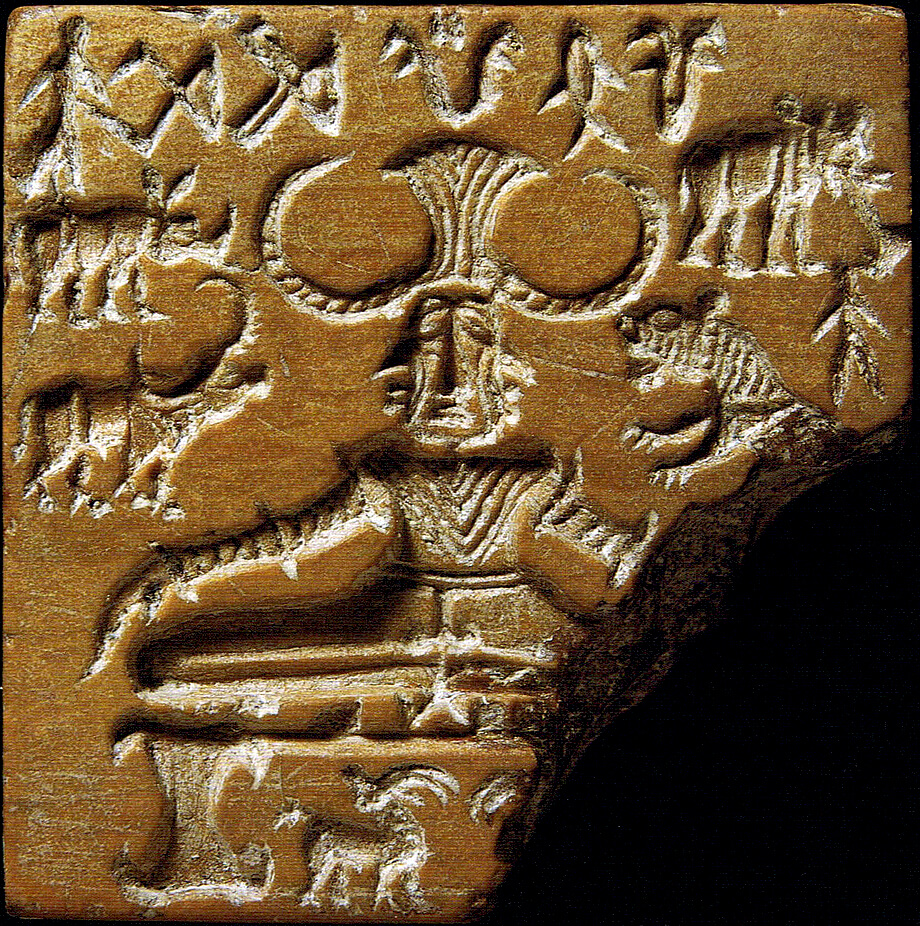
Religion
People of Indus Valley Civilisation worshipped female Gods and Pashupati. It can be suggested that people often worshipped some sort of image. The most commonly found figurine is that of a female deity which has been called as Mother Goddess. Some seals also show animals sitting on a yogic position. Some Indus Valley Civilisation seals have swastic on it. One such seal shows that of one horn animal surrounded by rhino, buffalo on the right and an elephant, tiger on the left which makes us to believe that those people worshipped Lord Shiva or Lord of beasts called as Pashupati. Worshipping of peepul tree was another important faith.
The discovery of large number of seals with peepul tree on it suggests that tree was considered as sacred. This shows that the people of IVC realised the importance of the eco system, which included flora and fauna in the life of humans. Some texts quote that Jainism existed during this period.
People believed in life after death. Hence, people buried the dead bodies along with all household items and food items like wheat, jewellery etc. Even if they were cremated, they preserved the ashes.
Clothing
Men and women wore colourful robes. Women wore jewellery of gold and precious stone. Among the treasures found was a statue of women wearing a bracelet. Bracelets with similar designs are worn today in India.
The basic costume of ancient society was a long cloth wrapped around the lower part of the body, and a loose fitting garment for the upper body, which was usually another length of fabric. A headdress was also worn, mainly by the men.
Women in Indus Valley Civilisation wore a variety of garments. The first being a skirt type garment, with a blouse and scarf. Second is a sari, which is a long fabric wound around the body with the loose end thrown over the shoulder, which was worn mainly by tribal women.
Men also had a choice in their clothing though not as varied as the women. Men usually wore a dhoti, which is a long of fabric wrapped around the waist. This could be left as a skirt or brought through the legs and made into a pants type garment. Male headdress was also a length of fabric, wrapped around the head, called a Turban. Women also sometimes wore the turban.
Clothing was made from resources found in each region. Cotton and wool were the most abundant, since silk was not introduced from China until around the 1st century BC. People also enjoyed lavish embroidery and embellishments. Gold being the preferred, though there was also an abundance of silver and precious gems.
Trade and Transportation
The economy of the Indus valley civilisation was
mainly dependent on trade. Due to the advancement in the technology the people
in this civilisation used Bullock carts for doing trade.
Agriculture was the main occupation during Indus Valley Civilisation. Wheat and barley was their main occupation. The Indus Valley Civilisation economy was mainly dependent on trading. The land near the Indus River was very fertile due to heavy rainfall. This led to produce plenty of crops of wheat and barley. An extensive canal network used for irrigation has been discovered by HP Francfort
Traders used trade routes to bring raw materials into the towns and cities. Archaeologists have found weights and measuring sticks which suggest that there were trade centres within the cities. They had trade relations with other countries. Gold and silver copper and other precious stones which have been evacuated in Mohenjo-Daro and Harappa suggests that trading was done with foreign countries.
The people of Indus Valley Civilisation used weights and measures in their business trading transactions. They used 16 and its multiples in measurement and weights. Trading seals have been found in Mesopotamia which shows trading was done with other countries. Mesopotamians wrote about importing goods from the Indus people which further support the idea of trading partnership between the two civilisations.
Late Harappan Period
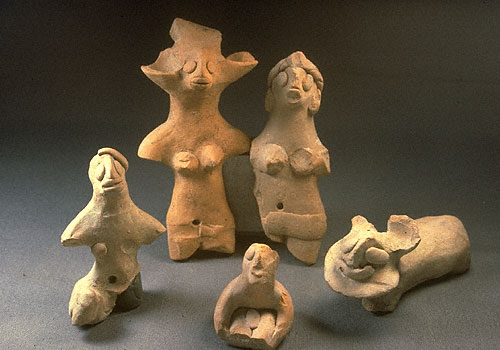
The gradual decline of Indus valley civilisation started 1800 BC. It is found in some of the sites of Harappa the end of the civilisation could be due to the increase in the diseases like Leprosy and Tuberculosis.
The exact reasons for the decline of the one of the most unique and beautiful civilisation is still not clear. Many reasons have been postulated for the decline. People of Indus Valley Civilisation were loving and caring. They had no weapons to fight. The invasions of the Aryans may have led to the decline of this civilisation. Aryans were skilled fighters.
Update on coronavirus in India
The lighter skin coloured Aryans might have pushed the dark coloured skin Dravidians to south of India. The change in the course of the Indus River might be another reason for decline. Less rainfall, natural disaster like earthquake increase in population might have all caused the reason for decline of Indus Valley Civilisation. There is also the probability of some epidemic like cholera wiping out this great civilisation.
Whatever might be the reason the lifestyle of people of Indus Valley Civilisation is worth reading and understanding. They were very good architects, good planners and above all caring and loving people.
The Indus Valley Civilisation people were very resolute and flexible and continued to evolve even in the face of adversities such as declining monsoon. People shifted their crop patterns from large grained cereals like wheat, barley during the early part of intensified monsoon to drought resistant and species like rice in the later part.
Affiliate Disclosure:
If you make any purchase via a link on this site, I may receive a small commission with no added cost to you.
